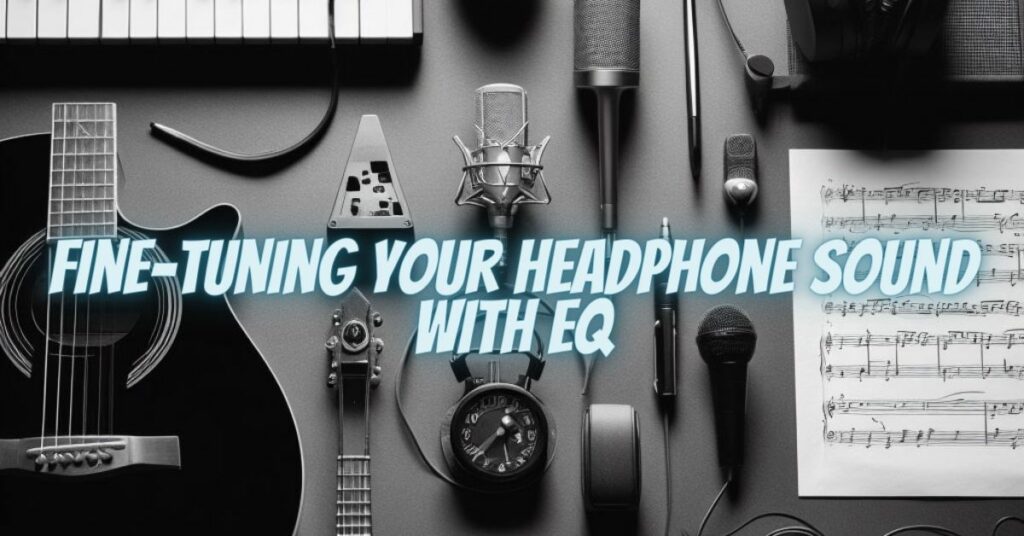Headphones are a staple of modern life, offering a private and immersive listening experience. However, not all headphones provide the same audio quality, and personal preferences for sound vary widely. To customize your headphone’s audio output to your liking, Equalization, or EQ, can be a powerful tool. In this article, we’ll guide you through the process of EQing your headphones for optimal sound quality, taking into account various software and hardware options.
- Choosing the Right EQ Software
To EQ your headphones effectively, you’ll need the right software. Fortunately, there are many options available, ranging from system-wide EQ software to mobile apps. Some popular choices include:
- System-wide EQ Software: For Windows, macOS, and Linux users, system-wide EQ software like Equalizer APO, Peace Equalizer, or Boom 3D allows you to adjust sound settings for all applications.
- Mobile Apps: If you primarily use your headphones with a mobile device, you can find numerous EQ apps on platforms like iOS and Android. Apps like Eqfy, Wavelet, or Equalizer FX are excellent choices.
- Headphone-Specific Apps: Some headphone manufacturers provide EQ apps designed specifically for their products. If you own headphones from a brand that offers such an app, it’s worth exploring.
- Understanding Frequency Bands
Before diving into the EQ settings, it’s crucial to understand the frequency bands and their impact on your listening experience:
- Bass Frequencies: Lower frequencies (20Hz – 250Hz) affect the depth and rumble of your audio. Adjusting this range can make your headphones more suitable for genres like hip-hop or electronic music.
- Mid Frequencies: The midrange (250Hz – 2kHz) controls the warmth and presence in your audio. Fine-tuning this range can improve the clarity of vocals and instruments like guitars.
- High Frequencies: Higher frequencies (2kHz – 20kHz) influence the treble, adding brightness and detail to your sound. Tweaking this range can make your audio crisp and clear, ideal for genres like classical or jazz.
- Calibrating Your EQ
Customizing your headphone’s EQ settings can vary depending on the software you use. Here’s a general process to follow:
- Flat Response: Start by resetting your headphone’s EQ settings to a flat, neutral response. This is often labeled as “Flat,” “Default,” or “None.”
- Experiment: Play audio with a variety of genres and instruments. Listen for what you like and dislike about the sound. Does the bass feel too strong or too weak? Are the vocals clear enough? Is the treble too bright or too dull?
- Adjust Gradually: Make small adjustments to the frequency bands, either boosting or reducing as needed. Start with the bass, then the mids, and finally the treble.
- Save Presets: Many EQ software allows you to save presets. Create multiple presets for different listening scenarios, such as music genres or audio sources (movies, games, podcasts).
- Regular Testing and Fine-tuning
Once you’ve established your preferred EQ settings, it’s essential to regularly test and fine-tune them. Your audio preferences might change, or you may discover that certain songs or audio sources require adjustments.
- Beware of Overdoing It
While customizing your headphone’s sound can be beneficial, be cautious not to overdo it. Extreme EQ settings can lead to distortion and degrade audio quality. It’s often better to make subtle adjustments for the most natural and pleasing results.
EQing your headphones is a valuable tool for tailoring your listening experience to your preferences. With the right software and an understanding of frequency bands, you can create a personalized audio profile that enhances your enjoyment of music, movies, games, and more. Regular testing and fine-tuning, along with careful adjustments, will help you achieve optimal sound quality without compromising audio fidelity. Enjoy your music as it’s meant to be heard, right through your perfectly EQ’d headphones.


